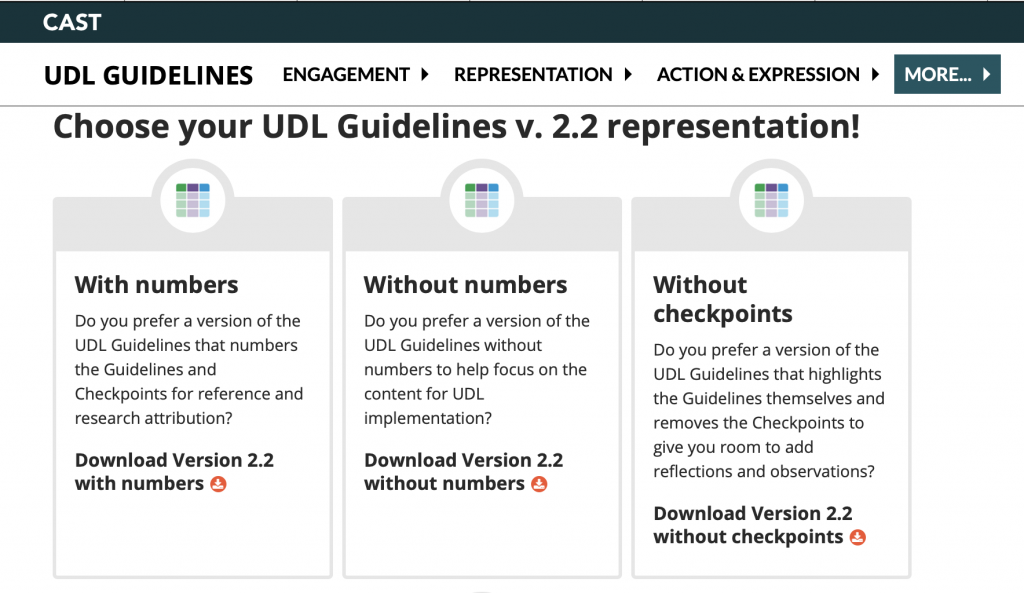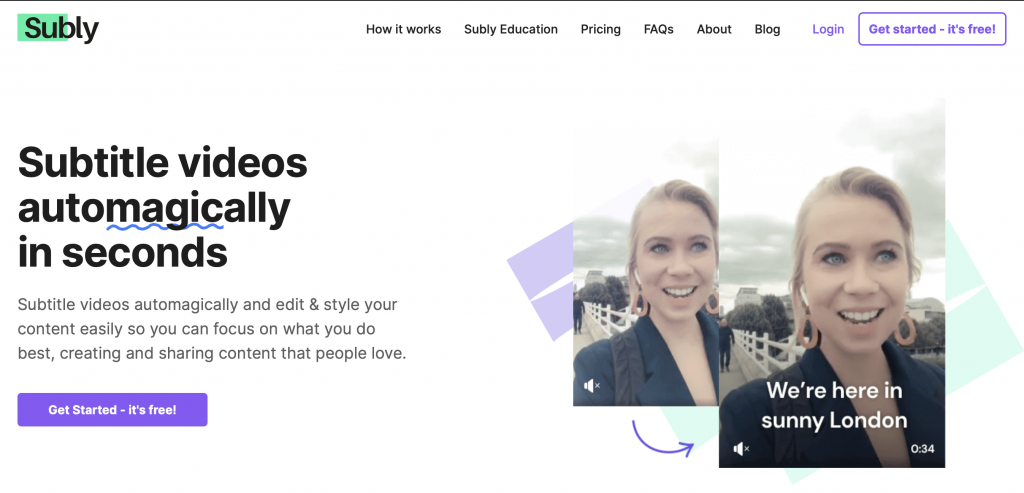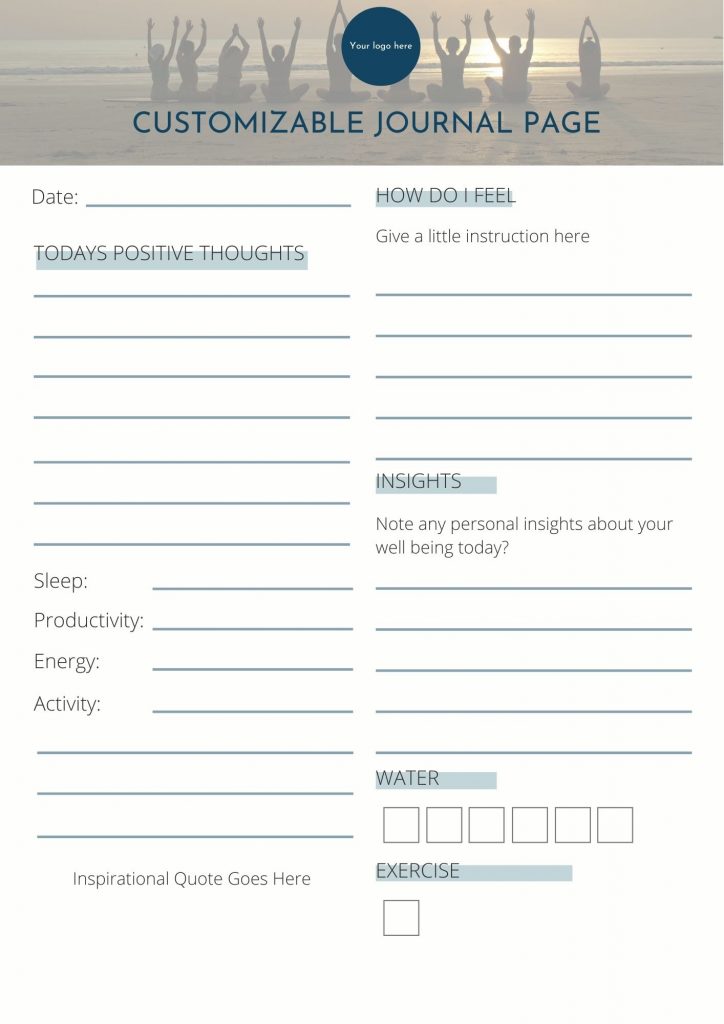Why is Universal Design for Learning important when planning and designing ecourses? Without it, you could be unintentionally leaving out large numbers of learners who don’t learn or process information the same way that you do. When you launch your course, you will want to share it with everyone. When you consider Universal Design for Learning (UDL) as you build your course, you ensure that more people can enjoy your courses and get the most out of them. Designing courses this way actually benefits everyone who takes them.
What is Universal Design for Learning?
Universal Design for Learning is an instructional design framework that acknowledges the fact that every student comes into a learning environment with a preset preference for how he or she learns. Disabilities, cultural differences and past educational or professional experiences can shape preferences.
Universal Design is not new. In fact, it has been around since 2006 and was inspired by the Universal Design movement in architecture and product development. The idea behind UDL is to plan instruction from the beginning to include all types of learners. There are three overarching principles to consider when designing online courses using UDL. They are representation, action and expression, and engagement. Let’s chat about what each one is and how to use these principles when designing an online course.
How Does Universal Design for Learning Benefit eCourses?
If you create an ecourse based solely around the way that you learn and consume content, you are excluding a wide variety of learners. Sadly, they may not realize why they don’t understand your course content. They might just give you a bad review or ask for a refund. Ultimately, this doesn’t help you to market your course.
When you created your course, it was probably with the idea of helping someone solve a problem or learn a skill. Isn’t it in your best interest then to ensure that you are creating a course that will allow more people to use and benefit from it? When you consider other styles of learning, you include all of those learners and broaden the audience that can benefit from your course. Not only that, you will reduce the number of customer support requests, refunds, and negative course reviews. This could save you a lot of time and energy.

How Can I Use UDL When Creating Online Courses
Online courses are by their nature, more limited than classroom instruction. Obviously, you can’t have online learners use their sense of touch (unless you send items to them.) However, there are ways that you can organize material or present it to include more learners. Let’s take a look at each of the three principles of UDL and discuss some ways that you could change the design of an ecourse to use them.
Universal Design for Learning Guideline 1 – Representation
It’s a great idea to provide content in more than one format. This is not just helpful for individuals with hearing or visual impairments or learning disabilities. It has been shown that students understand content quicker when it is presented in multiple ways.
Questions to Ask Yourself When Designing Your Course
How can I design my online learning environment so it is accessible to all or able to be understood by more people?
What will I present to students and how can I vary the ways that it’s presented?
Is my course content relying on one sense (for instance visual) over others?
For online learning, it’s a good idea to offer information in more than one format. Some examples of this with online courses are:
- Providing video recordings with captions.
- Providing audio recordings with a transcript.
- Have printed materials for those who don’t want to use video or audio recordings.
- Use course documents that can be used with an e-reader.
- Provide a way to consume the content in another language.
It’s also a good idea to present information with a shared language and understanding. This might mean that you should provide a vocabulary glossary to explain terms that may not be familiar. Illustrate concepts through multiple forms of media (ex. photos, videos, graphs, cartoons, auditory explanation, and text explanation.) Keep in mind that some students might not be good at reading words, symbols, etc. When you provide recorded books or text to speech options, you allow them to focus on the subject that you are teaching instead of trying to decode the text that they are reading.
You can see an example of representation below.
The UDL website gives consumers three options for receiving the UDL guidelines. The first option has guidelines that are numbered for reference. The second option offers guidelines without numbers to allow the user to focus on the content. The third version highlights the guidelines and removes the checkpoints to allow room for the reader to write notes.

Keep in Mind That Not All Learners Have the Same Background
One thing that is often overlooked in education is that many students don’t have the same background and training. It’s a good idea to tie the information in your course to any pre-requisite information that the student might need to know to understand it. This could mean that you might need to refresh their knowledge on information that they will need to know or at least tie this new information to the old.
In addition, keep in mind that different people have different cultural backgrounds. It’s a good idea to avoid metaphors and figures of speech because they might not be understood by all students.
Also, keep in mind the design of your site. Good rules to follow for accessibility include:
- Remember to design for those with visual impairments.
- Avoid only using color to differentiate items. (This excludes visually impaired or color-blind individuals) Instead, use color and shape or text.
- Add captions to videos and create transcripts for video or audio files.
- Add Alt image descriptions to your website and course materials for visually impaired students (remember to turn this feature on for your Thinkific site.)
- Eliminate distractions and stress or anxiety by creating navigation that makes it clear where the user is in the content.
- Ensure that your site can be navigated by the keyboard as well as the mouse.
Tech Tools for Creating Transcripts and Captions
Captions and transcriptions are becoming very popular among all learners. Many people prefer to read the content instead of watching a video for many reasons. This can be because they learn better when they read it or they are hearing impaired. Sometimes it is just because they are riding a bus or sitting in a crowded room and don’t want to disturb others around them. Here are some resources that you can use to easily add captions and transcripts for your course content.

Add captions to videos using sites like:
Create course transcriptions
Universal Design for Learning Guideline 2 – Action and Expression
Learners differ in the ways that they can navigate your website/course or demonstrate what they know. “For example, individuals with significant movement impairments (e.g., cerebral palsy), those who struggle with strategic and organizational abilities (executive function disorders), those who have language barriers, and so forth approach learning tasks very differently. Some may be able to express themselves well in written text but not speech, and vice versa.” CAST website Give learners different ways to express themselves, demonstrate what they’ve learned, and navigate through the course.
Questions to Ask Yourself When Designing Your Course
How can you ensure that students can navigate the site?
What can you do to ensure that your students can use assistive technology?
How can you provide support to students who might not be good at remembering things?
How will students demonstrate what they’ve learned?
More on Demonstrating Knowledge
If you have quizzes, tests, or other ways for students to demonstrate learning, consider allowing students the option of demonstrating their understanding of the knowledge another way. For example: instead of a paper and pencil test, a student could give a recorded presentation.
Some ideas for providing options in this area could be:
- Giving a recorded presentation.
- Completing a project that demonstrates an understanding of the subject matter.
- Participating in a group discussion on a topic.
- Drawing a comic strip with a script the explains a concept presented during that part of the course.
Universal Design for Learning Guideline 3 – Engagement
Look for alternate ways to get and keep students engaged in learning. Different learners prefer different ways of learning. Some may like working alone while others prefer working in groups. Some learners really like spontaneity and surprise. Others are put off by it because they prefer a predictable routine. There is no one thing that works for everyone.
Options for engagement with an online course include:
- Provide learners with autonomy. This could look like allowing for choice in how content is consumed, how they interact (group chat vs. email or voice mail to the instructor only), or allowing for choice in the timing of completing tasks.
- Give opportunities for group discussion in Zoom calls, chat rooms, etc. to discuss the topic presented in class.
- Provide an outline of material to be covered at the beginning of a lesson, this will give learners who like predictability an idea of what to expect.
Ensure that Content Provides Value, is Relevant and Authentic to the Learner
“Individuals are engaged by information and activities that are relevant and valuable to their interests and goals.” CAST website When designing a course, ensure that the course content and resources are appropriate for the age and ability level. Keep racial, cultural, ethnic, and gender groups in mind as well. Also, design learning activities that provide real-world value. Another way to engage learners is by inviting reflection, personal evaluation, and response to the activity. One way to do this is by providing space in the course workbook for reflection. Include a question or two that would prompt reflection.

Minimize Threats and Distractions
Different learners are more easily distracted. Some may be threatened by spontaneity or alternatively turned off by too much predictability. One way to minimize surprise in an e-course is to provide access to tools such as a course calendar, outline, or schedule. Provide a google calendar that will alert learners when a live webinar is about to start.
Questions to Ask Yourself
How can I provide options for more visual or auditory stimulation or less?
Can students walk away from the content and take a break if they need one (if it’s a live class, can a recorded option be available?)
Do all students really need to participate in group presentations or give a presentation in front of peers?
In Conclusion
Take time to plan your course content and design to include other learners. This will ensure that all of your hard work to create amazing courses will not be lost. There are people with varying abilities and learning styles. Taking the time to build inclusive features makes your course more accessible to many people and improves it for everyone.
Would you like help incorporating Universal Design for Learning into your ecourse or get an accessibility review of your existing course? Schedule a call with me.
GET INSTANT ACCESS TO FREE MINI -TRAINING “ROADMAP TO A PROFITABLE COURSE”



